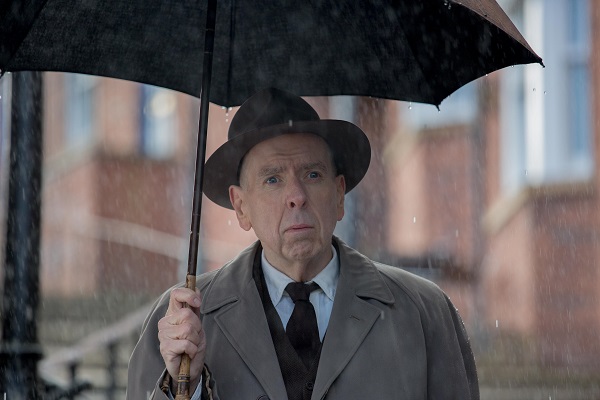How to end a diverse and vibrant festival like EIFF? Go for something eye-catching or play it safe? Closing off any kind of big event always entails some element of anti-climax, but it’s hard to fathom why the organisers selected the dull, turgid Mrs Lowry & Son. Perhaps it was the lure of British acting royalty in Timothy Spall and Vanessa Redgrave, or its subject being one of the country’s most beloved painters. Whatever the reasons, it ensures the festival goes out with a whimper.
L.S. Lowry (Spall) lives with his bitter, domineering mother (Redgrave) in Salford. A rent collector by day, he indulges his passion for painting in the evening, much to the disgust of Mrs Lowry. She spends her days in her bed, lamenting her diminished social standing, and is only happy when telling her dutiful son how awful his art is, and what a disappointment he is to her.
Spall has, of course, portrayed an artistic icon before in Mike Leigh’s Mr Turner. While that film had its longueurs, it was a vivid depiction of a complex man. From his work here it appears Lowry was rather a simple soul, and while his art found beauty in the routine and mundane, this in no way comes across in the film. It’s adapted from a play and little attempt has been made to transcend its origins. It feels like director Adrian Noble has relied primarily on the centrifugal force of its stars to haul in into the realms of the cinematic.
It’s not enough. When the vast majority of a film’s ‘action’ takes place in an old lady’s bedroom, you’re in trouble. Nothing good has ever taken place in an old woman’s bedroom. Spall and Redgrave try their very best – Redgrave, in particular, is at times joyfully spiteful – but with the exception of a brief moment where Lowry finally blows his stack at his horrific mother, Mrs Lowry & Son remains on the same almost comatose register. Chamber piece sniping can be great; 12 Angry Men and Who’s Afraid of Virginia Woolf? for example, but there’s no escalation of drama and no conclusion.
The film doesn’t raise a pulse until a coda featuring the painter’s work framed in all its glory at the Lowry gallery in his hometown. Finally, there is the burst of life that the film has conspicuously lacked for its duration. The intention clearly is to have a similar impact as Tarkovsky‘s sudden supernova of colour at the finale of Andrei Rublev where the camera pans with infinite tenderness across the great icon painter’s surviving work. A lofty aim, and it’s great to see Lowry’s work onscreen, but there’s more energy in one of those paintings than there is in the entire movie.
When done with imagination, a good biopic can really delve under the skin of its subject. If Mrs Lowry & Son in any indication, however, it’s that Lowry’s personality had already been expressed far more eloquently on canvas.
